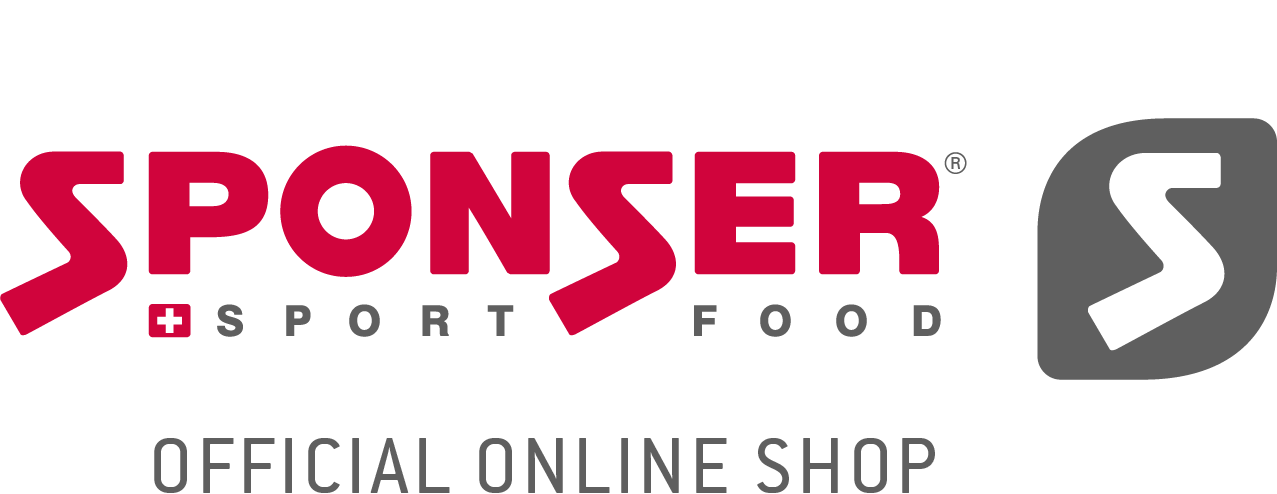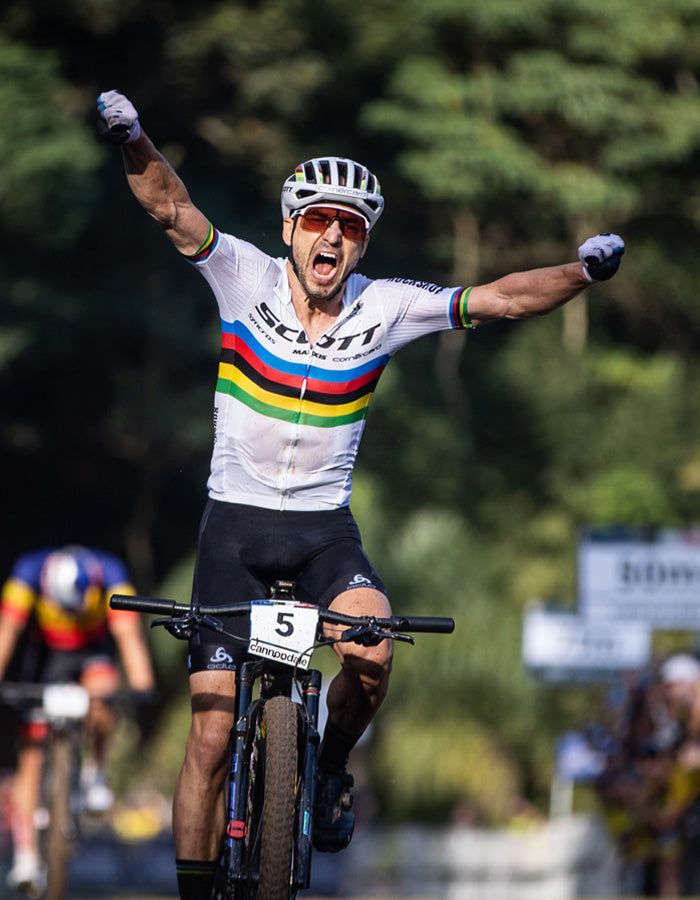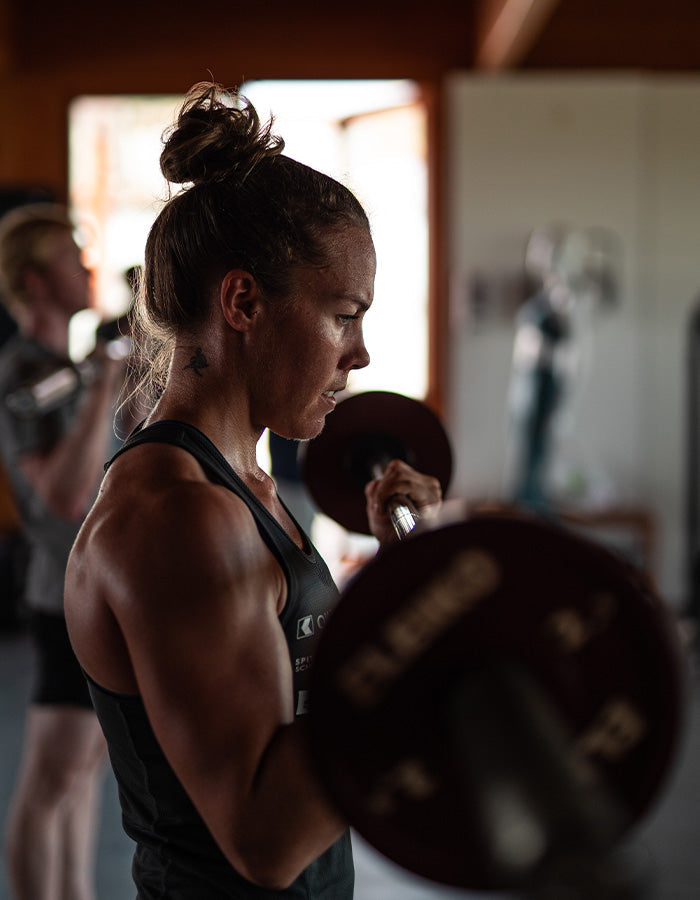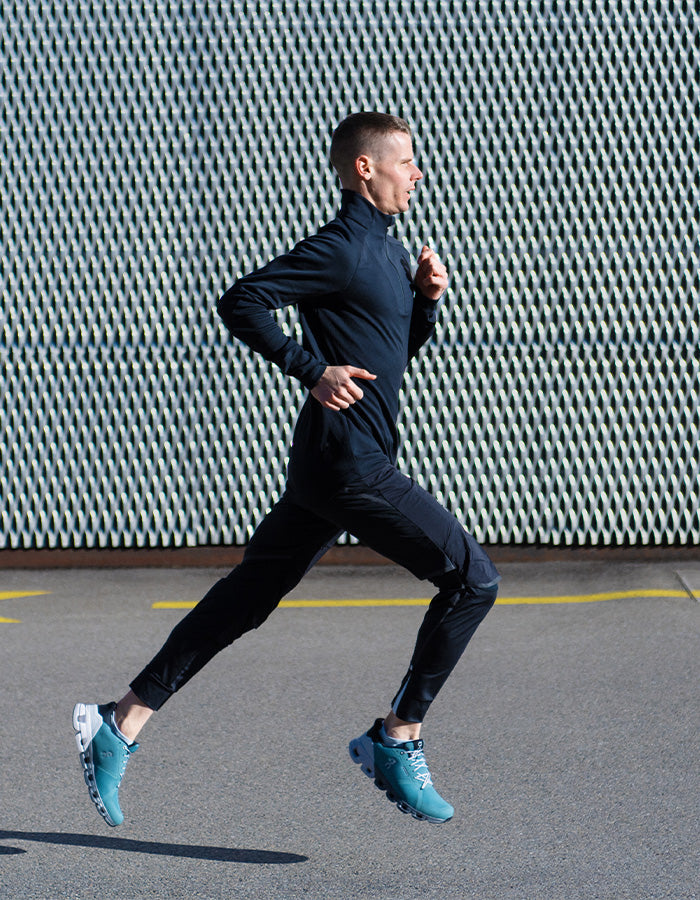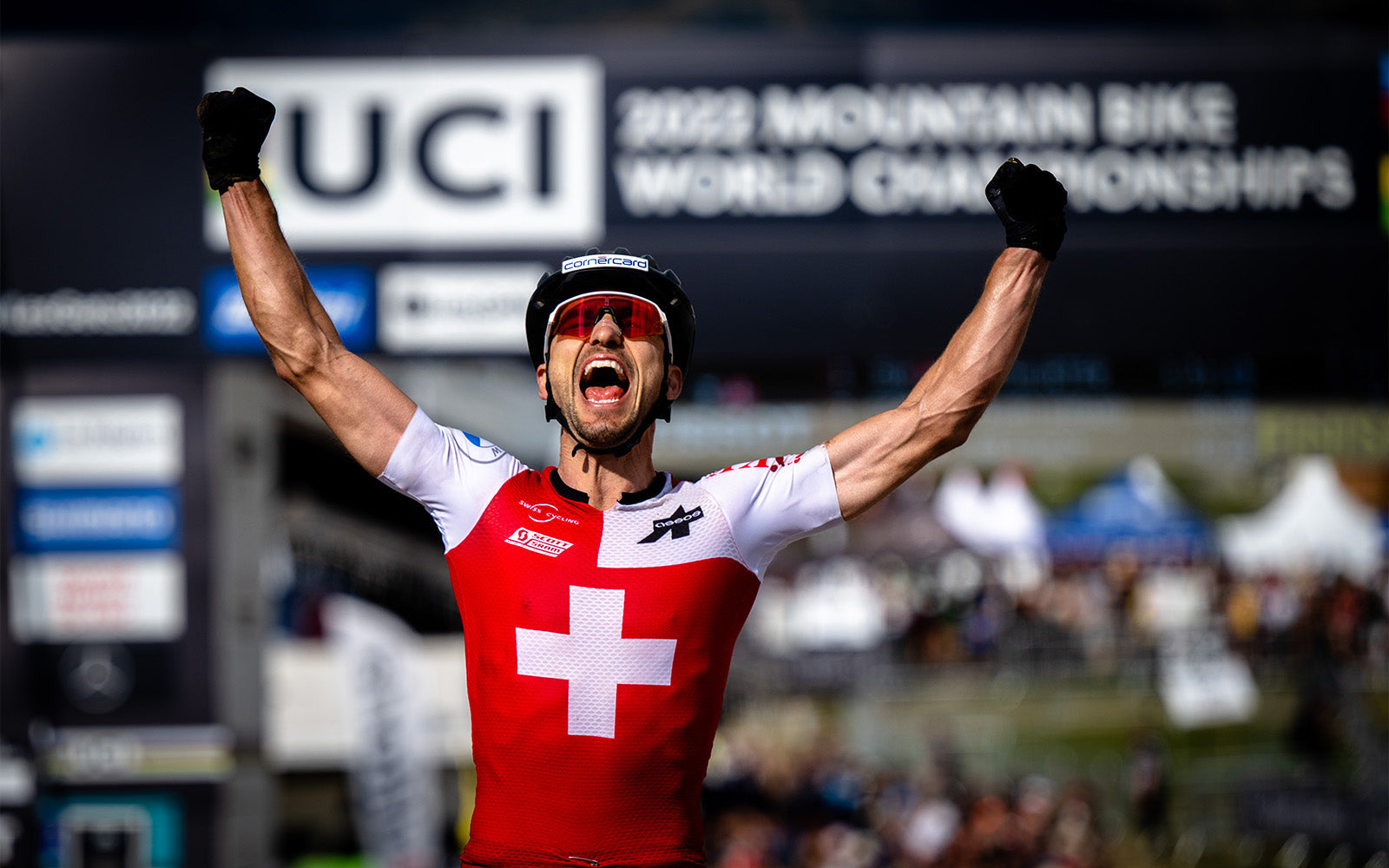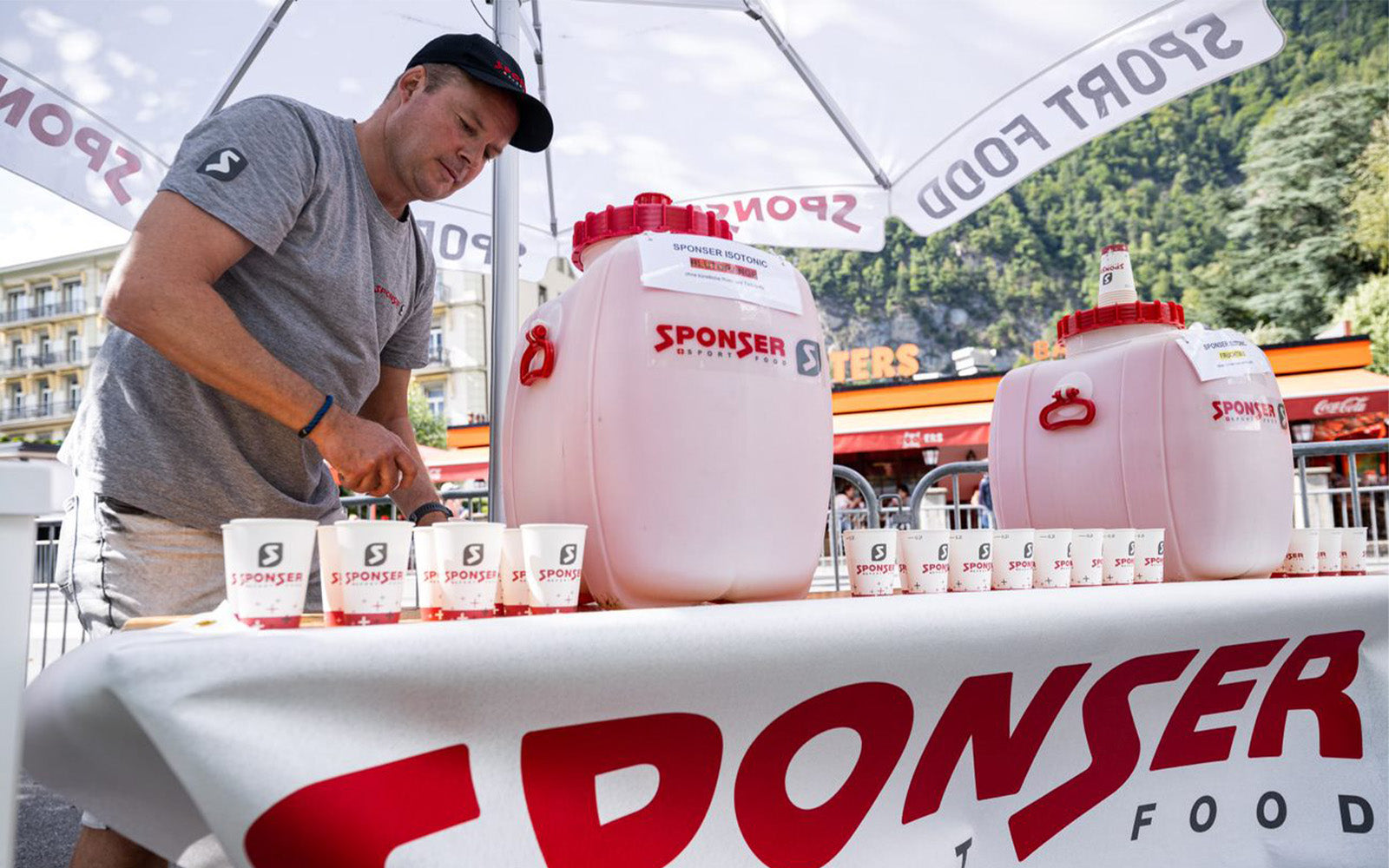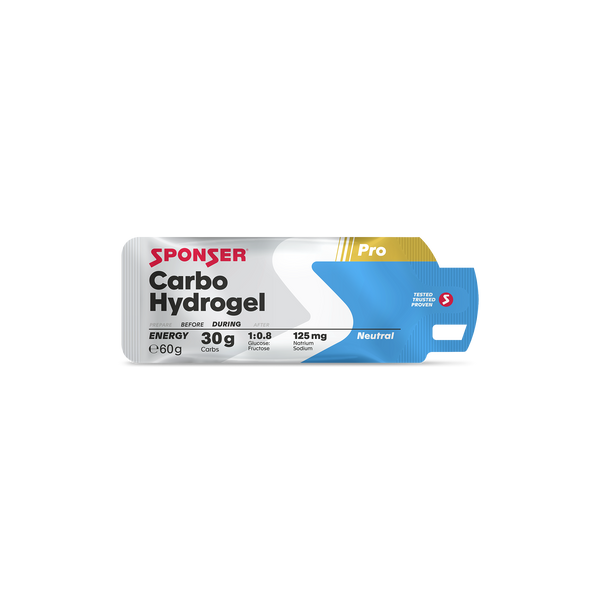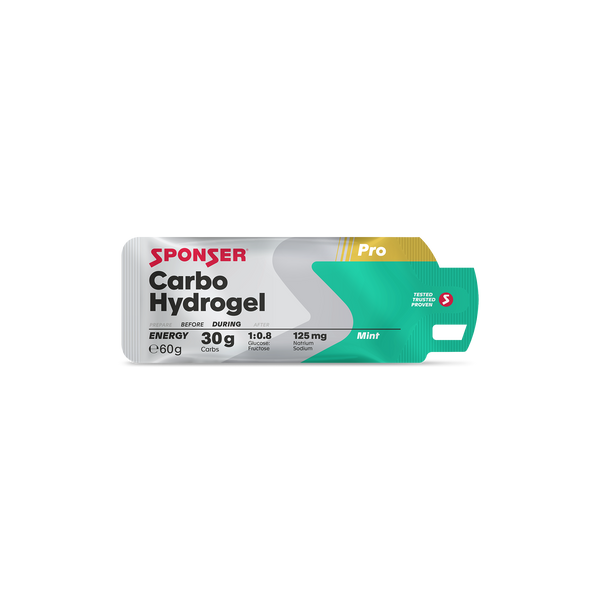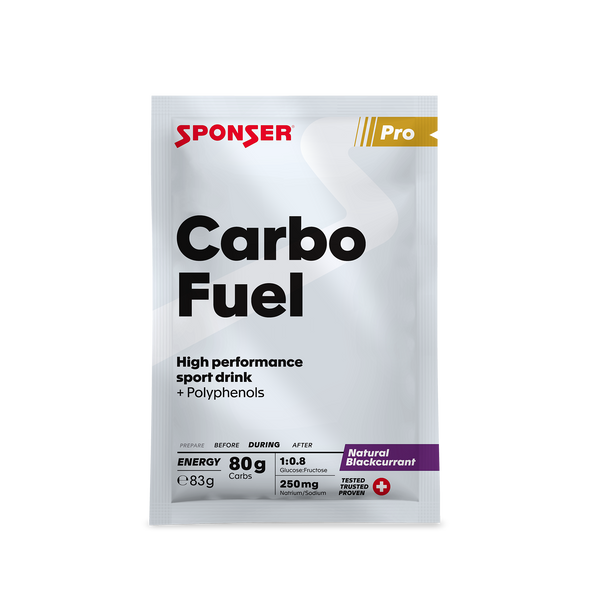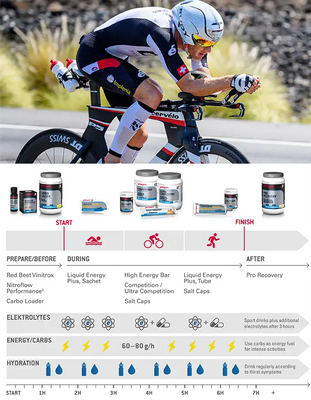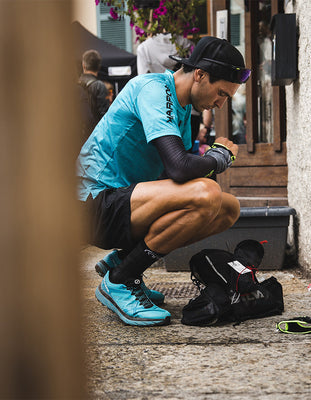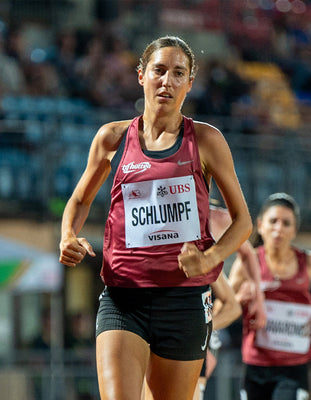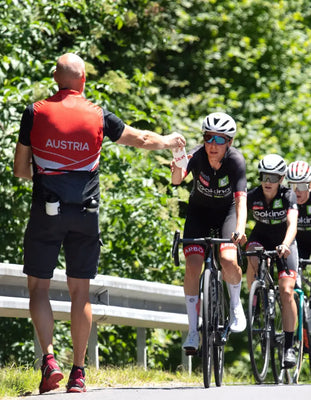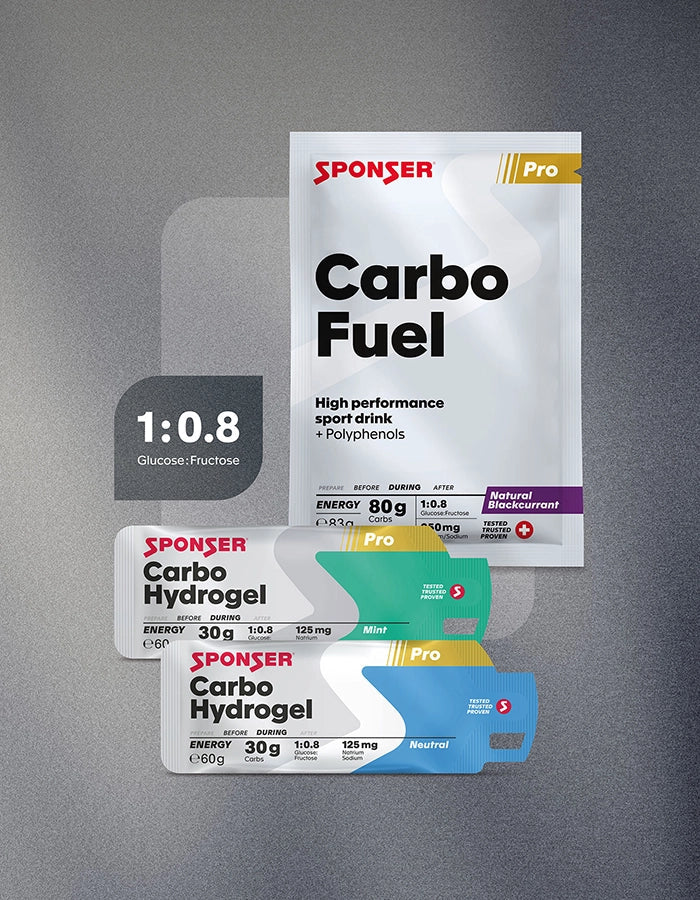
Optimal Carbohydrate Intake in Endurance Sports
From training rides to competition day, the right carbohydrate intake often determines victory or defeat. But how many carbohydrates does the body really need? And why does the ratio of glucose to fructose, known as the «carb ratio», play such a crucial role? This article explains how the right carbohydrate ratio and appropriate sports nutrition can help you get the most out of your body during exercise.
Carb ratio – simply explained
The carb ratio describes the ratio of glucose to fructose in a sports drink or gel. All sources, such as sucrose, maltodextrin, isomaltulose, trehalose, etc., are taken into account. Both types of sugar are absorbed in the intestine via different transport mechanisms. Glucose uses the sodium-dependent SGLT1 transporter, while fructose is absorbed via GLUT5. The advantage: if both pathways are used in parallel (e.g. in a ratio of 2:1 or 1:0.8), the body can absorb significantly more energy per hour without overloading the gut.
When does a 1:0.8 ratio really make sense?
The answer depends primarily on the total amount consumed per unit of time, as well as duration and individual tolerance. During very long or intense sessions, where more than 80 g of carbohydrates per hour need to be consumed, glucose alone quickly reaches its absorption limit (approx. 60 g/h). Only by adding fructose can this limit be extended to 100–120+ g/h. A ratio of 1:0.8 glucose to fructose is recommended
• for competitions lasting more than 2 hours,
• for training rides lasting several hours,
• for high performance goals and generally high energy requirements, and
• for athletes with high training loads who follow the «fuel for the work required» strategy.
Be careful with too much fructose during athletic performance
Although fructose can enhance performance, it also carries risks, especially for sensitive athletes:
• Gastrointestinal problems with high fructose consumption: Excessive fructose intake can cause flatulence, nausea or diarrhoea.
• Consider individual fructose tolerance: Not every organism reacts to fructose in the same way. It is advisable to slowly work your way up to your personal tolerance level.
• Choose bound fructose over free fructose: It is mainly isolated («free») fructose that can easily cause digestive problems if not consumed together with glucose in similar quantities – or better – in a ration between 2:1 and 1:0.8.
• Pay attention to the absolute amount of fructose consumed: The absolute intake of fructose should not exceed approx. 40–50 g per hour, even when consumed together with glucose.
Adjust your carb ratio to your athletic goal
|
Carbohydrate intake |
Recommended ratio |
Area of application |
|
40–60 g/h |
Glucose alone is sufficient |
Basic training, moderate exertion |
|
60–80 g/h |
Glucose plus fructose (range 2:1 or lower) |
Interval training, long basic endurance units |
|
80–100 g/h |
Range 2:1 to 1:0.8 |
Competitions, long endurance training, HIT |
|
above 100+ g/h |
1:0.8 |
Only realistic with previous training and tolerance building («train the gut»!) |
Carb ratio of selected SPONSER products in comparison
|
Product |
Carb ratio glucose:fructose |
Carbohydrates per serving |
Special features |
|
CARBO LOADER |
7:1 |
73 g / 300 ml |
Highly concentrated carbohydrate-electrolyte solution for efficiently replenishing carbohydrate stores (carbo loading) before competition day, intake depending on body weight |
|
COMPETITION |
2:1, no free fructose |
~60 g / 750 ml |
Very well-tolerated, acid-free drink for longer sessions, suitable with fructose intolerance |
|
LONG ENERGY |
2:1, no free fructose |
~47 g / 750 ml |
Acid-free, with rapidly available protein hydrolysates, mildly flavoured, suitable with fructose intolerance |
|
ISOTONIC |
2:1 |
~44 g / 750 ml |
Isotonic thirst quencher with an great taste |
|
CARBO FUEL |
1:0.8 |
80 g / sachet |
Highly concentrated, acid-free, with blackcurrant & acacia fibre |
|
CARBO HYDROGEL |
1:0.8 |
30 g / gel |
Hydrogel technology, no need to drink afterwards |
|
POWER GUMS |
1:0.6 |
52 g / pack |
Carb gums to chew or suck with caffeine & vitamins |
|
LIQUID ENERGY PURE |
3:1, no free fructose |
50 g / tube |
No additives, neutral and very well tolerated, suitable with fructose intolerance |
|
LIQUID ENERGY PLUS |
3:1, no free fructose |
50 g / tube |
With caffeine, for competition phases and peaks in intensity, suitable with fructose intolerance |
|
ULTRA COMPETITION |
8:1, no free fructose |
~56 g / 750 ml |
Maximum tolerance during long endurance performances, suitable with fructose intolerance |
Conclusion: targeted energy supply as the basis for sporting success
Choosing the right carbohydrate ratio can be decisive for sporting success and tolerance during training or competition. If you want to consume high amounts of carbohydrates (e.g. more than 80 g/h), you will hardly be able to avoid a higher fructose content such as a 2:1 or 1:0.8 ratio. Important: find out what works best for you under stress! And: give your stomach enough time to slowly adjust to the optimal carb ratio («train the gut»).
Recommendation for practice
CARBO FUEL and CARBO HYDROGEL – both with a carb ratio of 1:0.8 – should be tested carefully during training to ensure maximum performance in competition!
Literature
Jeukendrup A. E. (2017): Training the Gut for Athletes, in: Sports Med. 2017 Mar;47 (Suppl 1):101-110.
Jeukendrup A. E. (2014): A step towards personalized sports nutrition: carbohydrate intake during exercise. Sports Med 2014; 44 (Suppl 1):25-33.
Jeukendrup A. E. (2004): Carbohydrate intake during exercise and performance, in: Nutrition. 2004 Jul-Aug;20(7-8):669-77.
